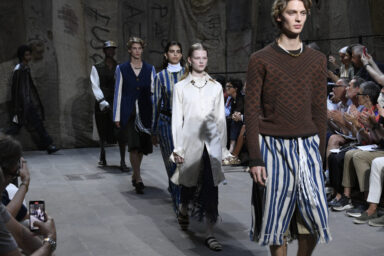Work Where – Artisans of the Oltrarno: a photographic journey in Florence, exploring the human ‘archive’ of its craft heritage
Text by: Alessio de’ Navasquez
Photos by: : Marcin Gierat
The immediacy of digital photography becomes the means for an in-depth analysis of the timeless Florentine craftsmanship. Blending traditional art, modern technologies and artisan anecdotes, the craftsman’s slow and every-step-matter working process is explored through a photographic project by Marcin Gierat. This immersive visual narrative is integrated with a series of video interviews by Alessandro Possati, the project creator.
The project aims to document the craft heritage of Florence as a unique know-how that must be preserved and passed down to new generations, with reference not only to techniques but also to the stories and anecdotes that represent the cultural heritage of a true human ‘archive’. The craftspeople of the Oltrarno – the southern district of Florence, ‘oltre’ (‘beyond’/‘on the other bank of’) the River Arno – thus become the subjects of the photographic project “Work Where” by Polish photographer Marcin Gierat. Alessandro Possati, creator and curator of the project, has documented the stories of the craftspeople with a series of video interviews. The technique used by Gierat for the portraits on show is the fusion of the relationship between art, technology and artisan traditions. By choosing to use the collodion wet-plate process (a craft printing system developed over two centuries ago), carpenters, tailors, bronze workers and other craftspeople of the Oltrarno are portrayed as timeless figures.
The patina that covers the images of their faces and workplaces is not that of time; rather, it is the depth of experience, the visible aura of the allure of the history of humanity and work. Thus, photography takes over as the means for documenting and narrating, of not merely showing but of going deeper, to overcome its artistic limits. With the technique used by Gierat, the concept of reproducibility of works that considers photography as a ‘lesser art’ or one more akin to design moves photography to share a place with the arts such as sculpture and painting.
The project, which has been created in collaboration with Danilo Ceri, who hosts it at his premises, stems from the idea of the exhibition’s curator Alessandro Possati, who for years has aimed to represent craftsmanship in a contemporary form. In this collaboration with the Polish artist (Krakovia, 1978), Possati succeeds in demonstrating his theory of contemporary craftsmanship epic in a concrete and effective way. It is by no mere chance that it is promoted by A.I., Artisanal Intelligence, which has been researching and promoting craft culture for years.

Every photograph taken with this technique is unique and it is impossible to create two identical ones. They can be used on different types of surfaces. A variation made on a black glass surface, like most of Marcin Gierat’s photos, is called ‘ambrotype’. Although photographic, the portraits are therefore unique items thanks to the variables that affect the work on the sensitivity of the plate which makes it optimal only when the collodion layer is still wet and requires a special skill from the photographer. The name comes from the fact that the glass plate inserted into the camera must still be wet after being immersed in a silver nitrate solution, which forms silver iodide. Even before this, the plate must be coated with a soluble iodide mixture added to the collodion solution. Finally, the plate is developed by pouring a solution of pyrogallic acid onto it, and fixed with a strong solution of sodium thiosulphate, for which potassium cyanide is then replaced. Immediate development and fixation is essential because after the collodion film has dried, it becomes impermeable and the reagent solutions cannot penetrate it. The entire process must therefore be carried out within ten to fifteen minutes. Due to the timing and the fact that the chemicals are highly sensitive to air exposure and dirt, it is rather difficult to use this technique outdoors. The chemicals are toxic, so it is advisable for the photographer to wear a mask for the entire process. However, unlike many traditional techniques, it gives a high level of detail and clarity. It was invented almost simultaneously in 1851 by the English Frederick Scott Archer and the French Gustave le Gray, but Archer is considered to be the father of the collodion wet-plate process as he was the first to present the photographs to the public at the Great Exhibition at the Crystal Palace in London in that year.
In an era when digital photography is reducing photographic times to a minimum, slowness becomes a requirement for in-depth study and care, and an artisan skill that brings artistic ability to the fore.
Exhibition at Galleria Ceri,
via dei Serragli
11-15 June 2018


